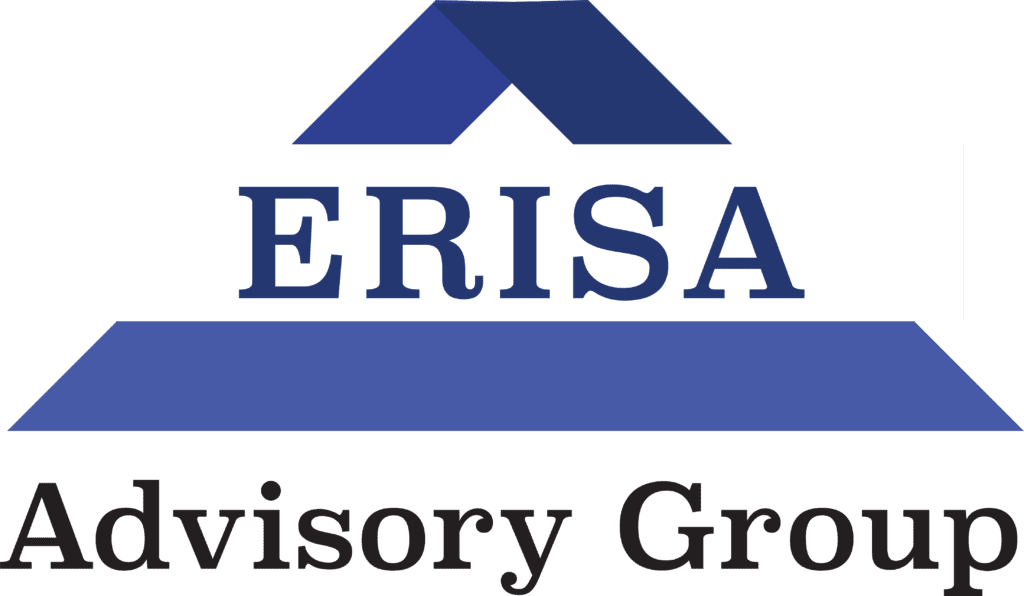ERISA Insider Vol II., Ed. IV: 7 Steps To Train Your Fiduciaries In ERISA Compliance
Most fiduciaries aren’t ready to face a potential EBSA Audit of your company plan. Here’s how to make them proactive and prepared.
Dear Employer,
Did you know that in 2020, the Employee Benefits Security Administration (EBSA) collected over $3.1 billion dollars in recoveries from plan sponsors and fiduciaries?
In addition, they closed 230 criminal investigations and indicted 70 individuals associated with ERISA compliance violations.
These numbers should serve as a wake up call. The harsh truth is that most fiduciaries who assume personal liability for their company’s Health & Welfare or Qualified Retirement Plan aren’t prepared for a DOL audit.
In this addition of ERISA Insider, our goal is to help you prepare your plan fiduciaries for a potential crisis. Or, hopefully, give them the tools they need to be proactive instead of reactive when it comes to keeping your plan in compliance to avoid a crisis in the first place.
Let’s waste no time.
Step #1: Make your plan fiduciaries understand their legal responsibilities, and their level of personal liability attached to their position.
You might be surprised to learn that most plan fiduciaries don’t know they are fiduciaries.
Many businesses we work with at the ERISA Advisory Group previously appointed a rank and file employee, an office secretary, or another individual in the organization to a fiduciary role without expert knowledge in ERISA compliance.
The problem is those individuals often do not realize they take on special legal obligations when they assume the position of fiduciary.
Fiduciaries have been around since ancient times. Their role can be understood as an independent voice whose mission is to put the financial interests of the client above the interests of the company or any individual in charge of managing his or her assets.
The Employee Retirement Income Security Act of 1974 (ERISA) lays out strict responsibilities for fiduciaries who manage the assets of participants and beneficiaries’ health or retirement benefits.
If a plan fiduciary is not fully aware of these responsibilities, he or she cannot adequately carry out this task. Often, plan assets are diverted or fees paid out by the plan are “unreasonable” under the law, and the fiduciaries are held responsible.
This can result in potential fines, penalties, and excise taxes imposed by the US Department of Labor, and in some cases jail time. The agencies involved in regulating ERISA plans will not show sympathy to fiduciaries who were unaware of their responsibilities – and they will be held personally accountable for any compliance problems found in your plan.
If you want to learn more about the specific responsibilities a plan fiduciary holds, read our first ERISA Insider Newsletter: Understanding Fiduciary Responsibility Under ERISA.
Step #2: Assign fiduciaries to specialized roles that cover their individual areas of expertise.
The good news about ERISA plan compliance is the law allows you to distribute responsibility to various team members.
It’s a great practice to assign specific roles to different plan fiduciaries based on their areas of expertise and specialized knowledge.
More often than not, you will have a fiduciary who is an expert in investments and others who specialize in legal compliance.
You can appoint those fiduciaries to different roles under ERISA, such as a 3(16) Plan Administrator, 3(21) Investment Advisor or a 3(38) Investment Manager.
This practice is commonly referred to as Fiduciary Governance, and is encouraged by ERISA.
To learn more about the various fiduciary roles attached to a Health & Welfare or Qualified Retirement Plan, you can also read about them in our newsletter: Understanding Fiduciary Responsibility Under ERISA.
If you have team members who might be a good fit for these roles, you can print out a copy to share with them.
Step #3: Hire outside service providers to help with areas your fiduciaries aren’t experts in.
You won’t always have fiduciaries on your team who are experts in all of these areas. When that is the case, consider hiring independent fiduciaries who can take on these roles.
The benefit of hiring an independent fiduciary is that he or she brings specialized knowledge and expertise to the table. Usually, this person has years of experience working in a very specific area of ERISA, and can help you take the necessary steps to keep your plan in compliance.
This specialist should also be confident enough in their skills to assume personal liability for their fiduciary role, and will be there to offer advice, answer questions or participate in a potential inquiry or investigation by the Department of Labor.
Furthermore, an independent fiduciary offers an unbiased perspective, and will always act to put the interests of plan participants & beneficiaries above the interests of your company. This signals to the DOL that you are taking a safe and smart approach to keeping your plan ERISA compliant.
If you need an independent fiduciary to assist with your plan, contact the ERISA Advisory Group to see if we can help.
Step #4: Go through the RFP Process when hiring outside help.
Health & Welfare and Qualified Retirement Plans have a lot of moving parts. When hiring outside service providers to help structure, manage or operate your plan, it is best practice to conduct a thorough Request for Proposal (RFP) Process to make sure you’re paying out fees that are considered “reasonable” under ERISA.
This step is often overlooked by plan fiduciaries. However, if the DOL finds you are paying out unreasonable fees to service providers from the plan, the company and fiduciaries can incur harsh fees, penalties and excise taxes for being out of compliance.
Conducting the RFP Process is a speciality in and of itself, and certain independent fiduciaries are experts at vetting service providers and their proposals.
If you need help carrying out the RFP process to ensure you are paying out reasonable fees from your plan, read more about our RFP Management services we offer at the ERISA Advisory Group.
Step #5: Properly fill out the annual Form 5500.
A fast way to trigger an audit by the EBSA is to make a mistake on your annual Form 5500. This document serves as the window into the financial health and stability of your plan, and will be the first place government investigators will look for potential ERISA compliance problems.
It is critical that your Named Fiduciary and 3(16) Plan Administrator understand how to fill out the Form 5500, and know the potential pitfalls that could lead to making errors on the Form.
What most fiduciaries don’t realize is that many sections of the Form are repetitive. The Department of Labor does this on purpose, because they want to see consistency in your answers and certain sets of financial information.
If the numbers don’t make sense, it’s a major red flag and may quickly lead to an inquiry or audit into your plan. To help avoid any mistakes, we’ve published an ERISA Insider Newsletter that guides you through the most common mistakes made on the Form 5500 and how to avoid or correct them.
Step #6: Understand the EBSA – how they operate and what they look for in ERISA plans.
The Employee Benefits Security Administration (EBSA) is the government agency tasked with auditing ERISA plans for potential fiduciary compliance problems.
We encourage all plan fiduciaries to educate themselves on how the EBSA operates, and specifically how they go about selecting plans for an audit.
Once a fiduciary understands the methodology behind this process, it becomes easier to prepare for a potential audit, or minimize findings should you face one.
To help in this area, we recently published a newsletter that provides a thorough analysis of the EBSA.
Additionally, the Department of Labor offers a number of voluntary correction programs so plan fiduciaries can proactively correct mistakes before an audit happens.
You can read about the Voluntary Fiduciary Correction Programs offered by the DOL in a separate edition of ERISA Insider as well.
Step #7: Educate your fiduciaries on Prohibited Transactions with parties in interest.
Finally, an important step you should take to prepare your plan fiduciaries is to educate them on Prohibited Transactions with parties in interest.
Prohibited Transactions under ERISA are one of the most common findings of an EBSA audit, and can potentially lead to fines, penalties and excise taxes which your fiduciaries will be held personally liable to pay for.
This area of ERISA compliance is particularly tricky, because the scope of these transactions is very broad. That’s why we published an ERISA Insider Newsletter on avoiding prohibited transactions early on, so you can be aware of how best to manage your plan finances.
(That newsletter is actually Part 1 of a 3-part series, where we also explain the Prohibited Transactions Exemptions that you can take advantage of, as well as the Voluntary Fiduciary Correction Programs the DOL offers so you can take corrective action if you made a mistake.)
As we always say: It is better to be proactive than reactive when it comes to ERISA compliance.
Learn More About The ERISA Advisory Group’s Fiduciary Training Program
At the ERISA Advisory Group, we have been helping plan sponsors and fiduciaries keep their plans compliant since 1995. Our founder and president, William Kropkof, CEBS, was a former DOL investigator tasked with auditing these plans before becoming an independent fiduciary nearly 25 years ago.
While we’ve made it a priority to provide as much information as possible to help fiduciaries with our ERISA Insider Newsletter, we know you cannot always learn everything by yourself.
If you would like us to share our decades of experience with your fiduciaries, we offer a Fiduciary Training Program in ERISA compliance.
When you enroll your plan fiduciaries in our program, William Kropkof will personally train your fiduciaries and give them a comprehensive walkthrough of how to keep your plan in compliance with ERISA – and how to prepare for an EBSA audit.
We offer this training program in person, or virtual, depending on your needs and preferences. To learn more, visit our website.
Or, schedule a time to speak with William Kropkof on his personal calendar.

